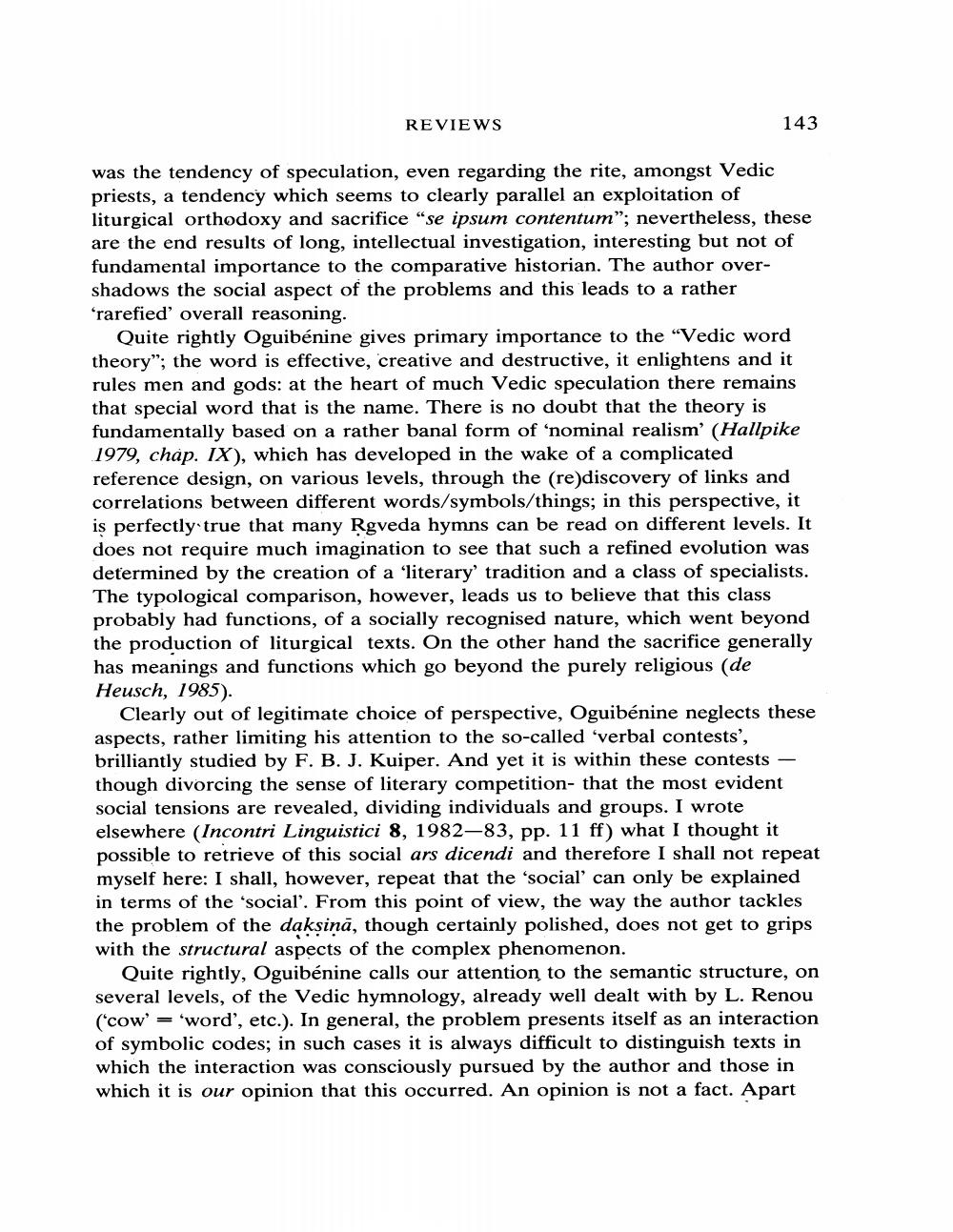Book Title: Book Reviews Author(s): J W De Jong Publisher: J W De Jong View full book textPage 1
________________ REVIEWS 143 was the tendency of speculation, even regarding the rite, amongst Vedic priests, a tendency which seems to clearly parallel an exploitation of liturgical orthodoxy and sacrifice "se ipsum contentum”; nevertheless, these are the end results of long, intellectual investigation, interesting but not of fundamental importance to the comparative historian. The author overshadows the social aspect of the problems and this leads to a rather ‘rarefied overall reasoning. Quite rightly Oguibenine gives primary importance to the "Vedic word theory"; the word is effective, creative and destructive, it enlightens and it rules men and gods: at the heart of much Vedic speculation there remains that special word that is the name. There is no doubt that the theory is fundamentally based on a rather banal form of ‘nominal realism' (Hallpike 1979, chap. IX), which has developed in the wake of a complicated reference design, on various levels, through the (re)discovery of links and correlations between different words/symbols/things; in this perspective, it is perfectly true that many Rgveda hymns can be read on different levels. It does not require much imagination to see that such a refined evolution was determined by the creation of a literary tradition and a class of specialists. The typological comparison, however, leads us to believe that this class probably had functions, of a socially recognised nature, which went beyond the production of liturgical texts. On the other hand the sacrifice generally has meanings and functions which go beyond the purely religious (de Heusch, 1985). Clearly out of legitimate choice of perspective, Oguibénine neglects these aspects, rather limiting his attention to the so-called 'verbal contests', brilliantly studied by F. B. J. Kuiper. And yet it is within these contests — though divorcing the sense of literary competition- that the most evident social tensions are revealed, dividing individuals and groups. I wrote elsewhere (Incontri Linguistici 8, 1982–83, pp. 11 ff) what I thought it possible to retrieve of this social ars dicendi and therefore I shall not repeat myself here: I shall, however, repeat that the 'social' can only be explained in terms of the 'social. From this point of view, the way the author tackles the problem of the daksiņā, though certainly polished, does not get to grips with the structural aspects of the complex phenomenon. Quite rightly, Oguibénine calls our attention to the semantic structure, on several levels, of the Vedic hymnology, already well dealt with by L. Renou (*cow' = 'word', etc.). In general, the problem presents itself as an interaction of symbolic codes; in such cases it is always difficult to distinguish texts in which the interaction was consciously pursued by the author and those in which it is our opinion that this occurred. An opinion is not a fact. ApartPage Navigation
1 2 3 4 5 6 7 8 9 10 11 12 ... 24
